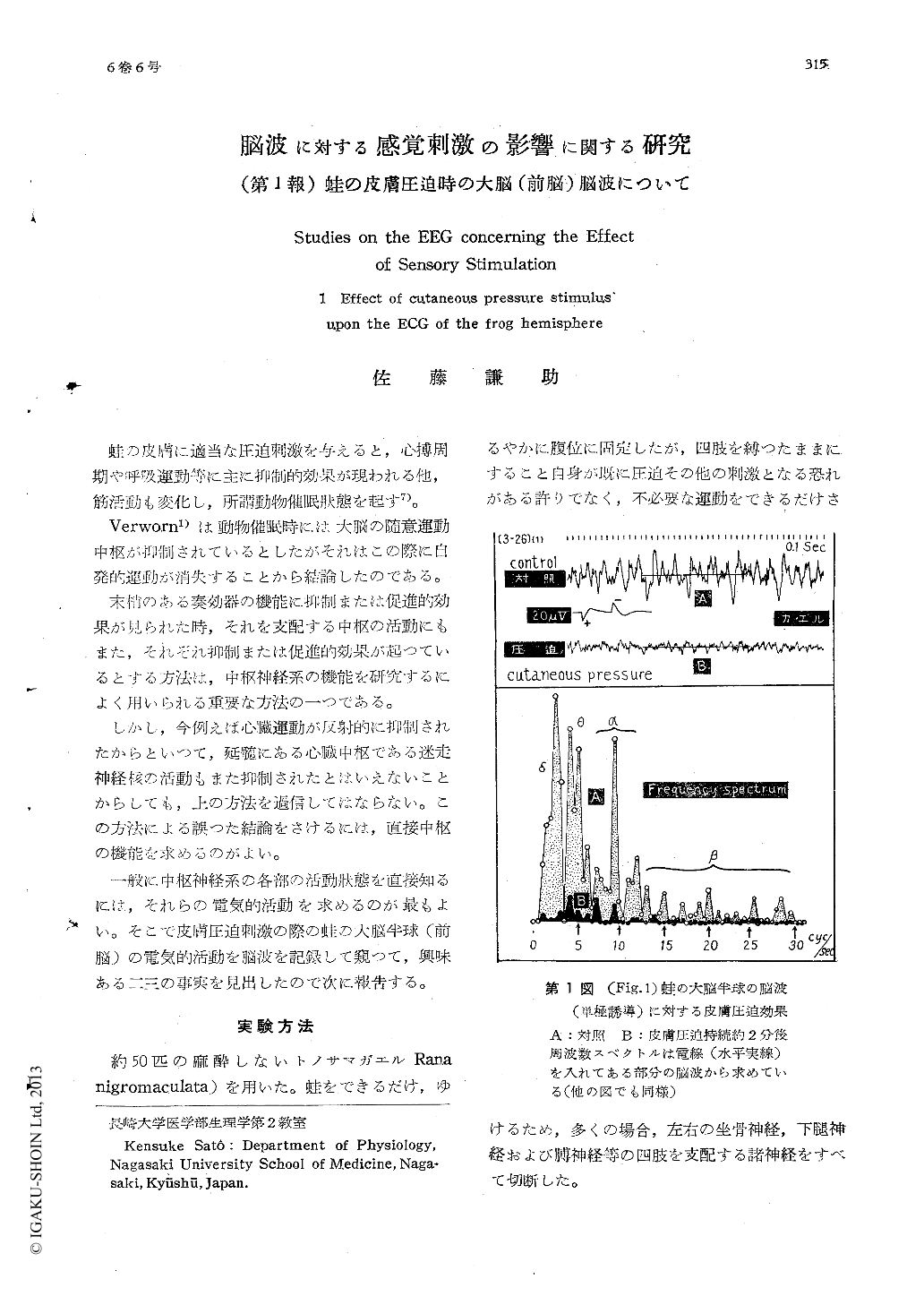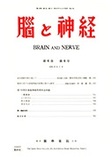Japanese
English
- 有料閲覧
- Abstract 文献概要
- 1ページ目 Look Inside
蛙の皮膚に適当な圧迫刺激を与えると,心搏周期や呼吸運動等に主に抑制的効果が現われる他,筋活動も変化し,所謂動物催眠状態を起す7)。
Verwom1)は動物催眠時には大脳の随意運動中枢が抑制されているとしたがそれはこの際に自発的運動が消失することから結論したのである。
As already shown by the author, respiratory movement, heart rhythm and voluntary move-ment of the frog (Rana nigromaculata) are easily inhibited by cutaneous pressure stimu-lus, so electrical activity of the hemisphere is investigated in this state ("animal hypnosis") and some new results are obtained as follows:
1. There seems remarkable difference bet-ween the ECG tracings of the frog hemisp-here and that of adult human occiput, i. e. the former is more irregular than the latter in many cases. Relatively little differences are seen in qualitatively, however, but quantita-tively in the structure of the frequency spec-trum of them (Fig. 1, 2 and 3).
2. It is recogniserble in the frequency spec-turums that cutaneous pressure stimulus cau-ses the diminution of all rhythms and besides some of the components in alpha rhythm (Fig. 1, 2 and 3), theta rhythm (Fig. 2 and 3 ), delta rhythm (Fig. land 3) and beta rhythm (Fig. 1,2 and 3) are fallen off.
3) From above results it may be proved di-rectly that even the highest level of the cen-tral nervous system such as the hemisphere (forebrain) of the frog is inhibited by cutan-eous pressure stimulus.
4) Adaptation to the cutaneous pressure sti-mulus occurs in ECG (Fig. 4 and 5) before the change in the posture and voluntary move-ments are not gotten back.

Copyright © 1954, Igaku-Shoin Ltd. All rights reserved.


